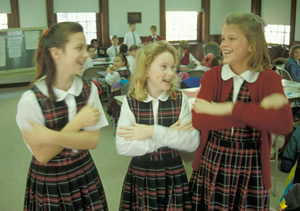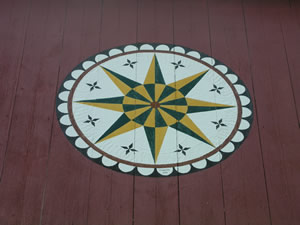 AMST 196 introduces the forms and functions of American folklore. Approaching folklore as an expression of tradition in our lives opens up socially significant questions about the relationship of tradition to modernization, individualism, and community. The course explains folklore to be fundamental to human lives and relates these cultural traditions to identities and values that Americans express in contemporary society. Folklore, you will discover, is all around us in the present, and emerging anew as well as significantly being found in our past. The study of folklore is an international subject, but in this course we will particularly focus on those traditions that distinctively emerged in America or were adapted in America from global sources. By examining the forms and functions of American folklore, we view a nation noted for its cultural diversity and strong community values as well as its mass cultural production. As in other American Studies approaches, we interpret meanings of texts and performances in their sociocultural contexts, and from folklore studies, we give attention particularly to methods of ethnography and field collection to uncover symbols, structures, and functions in expressive culture. Using these studies, we examine the ways that Americans convey values at various levels simultaneously: individual, family, community, nation, and globe. In a variety of media, including articles, websites, and videos, students will read, hear, and view examples of folklore, and learn of approaches to their interpretation. The expressions discussed in this class are uncensored, and coming from public culture, may contain strong or even offensive content; the educational intent of using them is to analyze materials as people know and express them so as to better understand culture.
AMST 196 introduces the forms and functions of American folklore. Approaching folklore as an expression of tradition in our lives opens up socially significant questions about the relationship of tradition to modernization, individualism, and community. The course explains folklore to be fundamental to human lives and relates these cultural traditions to identities and values that Americans express in contemporary society. Folklore, you will discover, is all around us in the present, and emerging anew as well as significantly being found in our past. The study of folklore is an international subject, but in this course we will particularly focus on those traditions that distinctively emerged in America or were adapted in America from global sources. By examining the forms and functions of American folklore, we view a nation noted for its cultural diversity and strong community values as well as its mass cultural production. As in other American Studies approaches, we interpret meanings of texts and performances in their sociocultural contexts, and from folklore studies, we give attention particularly to methods of ethnography and field collection to uncover symbols, structures, and functions in expressive culture. Using these studies, we examine the ways that Americans convey values at various levels simultaneously: individual, family, community, nation, and globe. In a variety of media, including articles, websites, and videos, students will read, hear, and view examples of folklore, and learn of approaches to their interpretation. The expressions discussed in this class are uncensored, and coming from public culture, may contain strong or even offensive content; the educational intent of using them is to analyze materials as people know and express them so as to better understand culture.
What will I learn in this course?
The structure of the class is divided into six sections containing 12 lessons, each posing key questions that will be answered in the class materials:
- Begin with the basics: definitions and locations of folklore in American culture.
- Introduce two major methods of collecting and analyzing folklore - ethnography and item collection - that you can apply in your own work.
- Discuss the sociohistorical background of folklore studies in the creation of American tradition.
- Survey folklore’s commonly associated groups (ethnic, religious, regional, occupational, and children’s groups) and genres (stories, speech, songs, objects). Using a variety of evidence from oral, material, and social traditions, we will interpret the ways that diverse identities of Americans are commonly formed, expressed, and changed in settings.
- Conduct a focused inquiry to bring all this material together. We will probe one of your identities related to an experience in which you are immersed: being a college student.
- Conclude with an awareness of trends, careers, and resources in American folklore studies.
 These sections are connected as a whole with the questions of identities and values that folklore reflects and creates. The course moves from the general to the specific by giving you background in the historical and contemporary overview of the field before giving a case study in student culture and the way that folklore reveals meanings of that identity. This case study will be a model for your own application of folkloristic methods in a project for the class, and for uses of folkloristic approaches in other classes and majors, and potentially, in an American Studies major and folkloristic career.
These sections are connected as a whole with the questions of identities and values that folklore reflects and creates. The course moves from the general to the specific by giving you background in the historical and contemporary overview of the field before giving a case study in student culture and the way that folklore reveals meanings of that identity. This case study will be a model for your own application of folkloristic methods in a project for the class, and for uses of folkloristic approaches in other classes and majors, and potentially, in an American Studies major and folkloristic career.
By the end of this course, students will have:
- gained tools of analyzing folklore in America (specifically, ethnography of cultural behavior, collection of items in the field);
- comprehended major American issues in the relation of folklore in modern society (e.g., role of tradition in a future-oriented society such as the United States, effect of modern technology on transmission of folklore, significance of identity and belonging to folk groups in a modern society, community and social relations in enactments of folklore, particularly as borne out by case study of college students);
- articulated major concepts, sources, and scholarship on folklore as a topic of inquiry in American Studies (e.g., motif index, belief indices, structure, performance, symbol, context), and;
- expressed in writing techniques of ethnography of a cultural narrative or custom and interpretation of field-collected texts.
This course qualifies for General Education and US cultures requirements. See your advisor if you have questions about how this course can be used in your program of study.
Are there any prerequisites for this course?
There are no specific classes that you must take before taking American Studies 196. This course is completely online. As with any course, you will get out of this course what you put into it. Learning in an online course is clearly different from taking classes in a traditional face-to-face classroom. You will need to take responsibility for your own learning and plan to be a self-directed learner. Be prepared for the amount of time that online learning takes and make time for it in your week.
On the other hand, enjoy the flexibility this online course provides you to organize your learning experience around your schedule. You choose when you want to work since our classroom virtually never closes, except for 5:00 to 7:00 a.m. U.S. Eastern Time daily, during which time Canvas maintenance is conducted.
To take this course, you should have a basic familiarity with computers and the Internet. It is recommended that you be able to use word processing software properly (for instance, edit, copy, paste, and save). You should also be able to handle email communications, including attachments, and be able to use a browser to access the Internet. You must also be a self-starter who feels confident about reading to learn and who is comfortable working independently.
I've never taken an online course before. What is it like?
By taking an online course, you can learn beyond the traditional borders of the classroom, and as part of a wider and more diverse audience. There are no preset meeting times, so this class will help those who are struggling with scheduling difficulties. We'll use Penn State's course management system, Canvas for AM ST 196, and a combination of text, Web links, images, and streaming video as our class "lecture." You'll communicate with the professor and your classmates through chat, Canvas mail and discussion forums within Canvas.
An online course is not easier than a traditional resident course! You must be willing and able to commit the same amount of time as you would for attending class and studying for a traditional course. If you're wondering whether an online course is right for you, use this short self-assessment checklist to learn more about your likelihood to succeed in this environment.
What are the technological requirements for this course?
This course is designed to work within the Canvas technological requirements.
How is the course structured?
AM ST 196 has 12 lessons. It begins with an “About You” survey to complete worth 5 points. There will be two writing assignments (an ethnography of an oral narrative or social custom paper, and a collection of 5 texts gathered in the field) each worth 250 points. There also will be five discussion forum assignments, each worth 50 points. In addition, each lesson has a Learning Assessment to complete, worth 5 points each, which will prepare students for the final exam. The online final exam is worth 250 points. These assignments and exam total 1065 points for the course.
Where can I get more information?
For more information about AM ST 196 Online, please view this sample syllabus or sample lesson. To register, visit the Office of the University Registrar. At the beginning of each semester, all enrolled students should access AM ST 196 at the site of Penn State's course management system, Canvas.